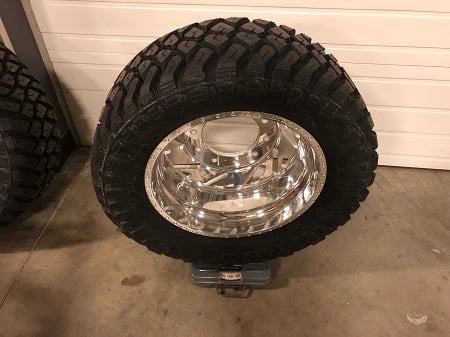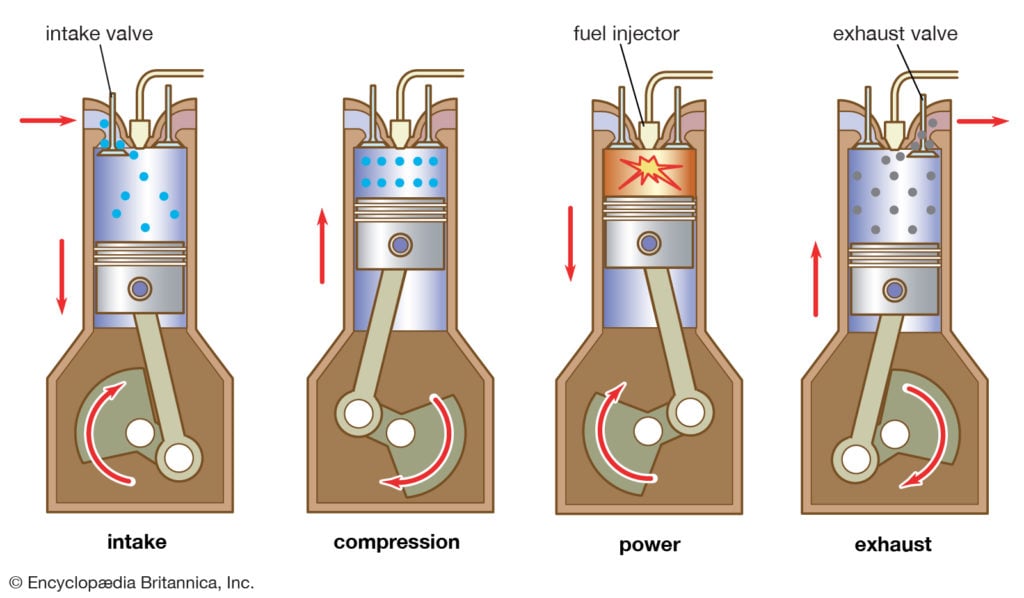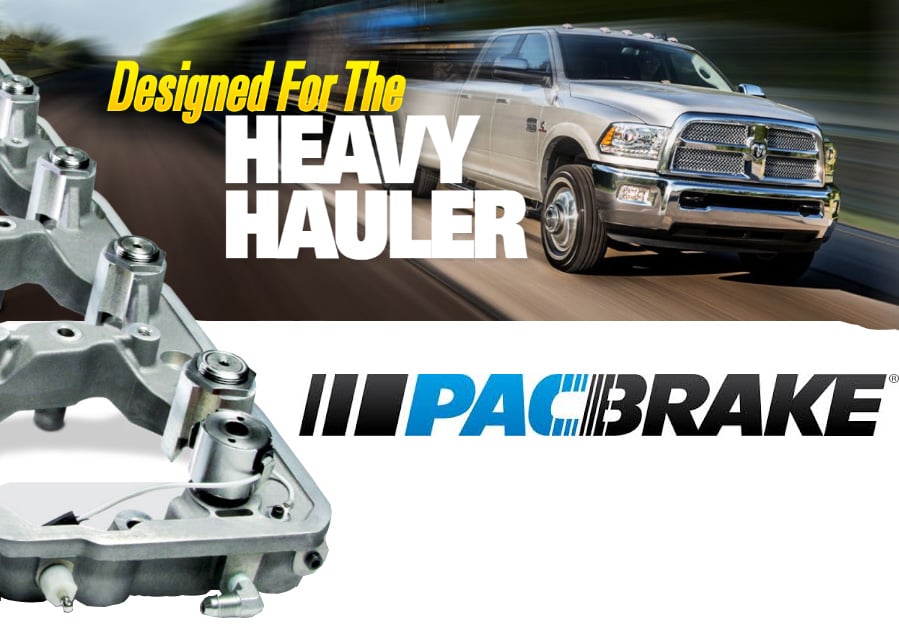You’ve seen the cartoon before: Wile E. Coyote is in hot pursuit of the Road Runner, and somehow runs right off the side of the cliff. He makes it a few feet out in midair, when suddenly he realizes there’s no ground below his feet. He tries to turn around, but once he looks down, gravity takes over, and the Coyote is history. The laws of gravity apply to more than just cartoon villains, and our trucks are no exception, especially when a loaded trailer is involved. With advances in chassis, diesel engines, and heavy-duty transmissions, it’s easier than ever to buy a truck which can comfortably haul 30,000 pounds or more. That’s a tremendous amount of weight to be responsible for, and with available engines producing 1,000 pounds of torque or more, it’s no problem to get that much weight up to the top of the hill. The problem arises when it’s time to get safely down the other side of the hill. To slow the roll of a heavy trailer, there are a few methods used by the OE’s.
Ways to Slow Down
Service Brakes: These are what bring your vehicle to a stop every time you drive. The major components include a rotating iron disc and some friction pads which are squeezed by a caliper using hydraulic pressure which comes from your foot on the brake pedal. As the pads are squeezed against the face of the spinning rotor, the resulting friction converts the energy of the moving vehicle into heat, and the truck is slowed down. Your service brakes work great when driving around empty, or with a few extra pounds of cargo in the truck, and when everything is working normally, the parts should last for a very long time.
Trailer Brakes: When pulling anything larger than a garden size utility trailer, typically you will find brakes on at least one axle of the trailer. There are different styles, but the most commonly used is an electrically actuated drum brake. It functions similar to the drum brakes on a car or truck, but instead of hydraulic pressure pushing against the shoes, the actuation is handled by an electromagnet. Inside the truck will be an electric trailer brake controller which ties into the brake pedal circuit so they will come on at the same time as the truck’s service brakes, and the controller can be set to vary the braking force according to how heavy the trailer is. Most newer rigs will have a built-in controller, but if you have an older pickup or no factory controller, there are plenty of retrofit kits available to get the job done.
VGT Exhaust Brake: The variable geometry turbocharger on a diesel engine can be manipulated to create a braking force inside the engine. By closing the vanes in the turbine housing, exhaust flow is restricted, and the spent gasses have nowhere to go because the vanes are in their way. This exhaust backpressure slows the movement of the piston, and ultimately the whole truck. A VGT exhaust brake works well and is a great supplement to your trucks service and trailer brakes, but because of gearing, transmission ratios, and torque converter lockup, an exhaust brake is most effective at higher RPM, and can’t bring a truck all the way to a stop, but it will help control speed on a downhill grade.
Aftermarket Exhaust Brake: If an engine doesn’t have a VGT, you can install an aftermarket exhaust brake like the PacBrake PRXB. This installs into the exhaust system after the turbocharger and is simply a valve that can close off the flow of the exhaust, and much like a VGT exhaust brake, the backpressure will slow the vehicle down. In order to provide consistent braking, the exhaust pressure is precisely regulated, and the braking effect can work at engine speeds as low as 1,200RPM, making it much more effective than a VGT.
All Together Now: When you combine service, trailer, and exhaust brakes together, you’ll be able to bring just about every trailer and cargo combination to a stop at least once or twice. But, if you’re hauling at the limit of your trucks GVWR, the stock braking systems can leave something to be desired. When traveling down a long grade for example, it will require almost constant pressure on the brake pedal to maintain a comfortable speed and maintain control of the vehicle. Because the momentum is being converted into heat when the brakes are applied, when going down a long hill there will be tons of heat building up in the brakes. The iron rotors will get hotter and hotter, as will the pads which are creating all the friction. Even though the rotors are vented, it doesn’t take much time before the brakes get too hot and the friction material becomes less effective. This goes for the trailer brakes and the service brakes on the truck, and the dead giveaway is an unpleasant smell not unlike an electrical fire. When this happens, you’ll have to push harder and harder on the brake pedal and will get less and less braking effect. If you ignore the warning signs, the speed of the truck can become uncontrollable, and you’ll find yourself in a situation just like the Coyote near the edge of a cliff. While this is a worst-case scenario, it happens to commercial drivers all the time. If you’ve ever seen the “runaway truck” ramps on the side of the highway and wondered what they are for, this is your answer.
Brake Upgrades
You might be wondering if there are ways to improve the effectiveness of your braking system, and the first step is to evaluate how your truck is modified. For example, larger off-road wheels and tires are not the best choice for a dedicated tow rig. First, the larger diameter tires will decrease braking power simply due to the extra leverage the tires have on the brakes. Taller tires make your brakes less effective, and will hurt acceleration, but that’s a topic for another day. Next, we have to consider rotating mass: a stock 20” wheel and tire for a 1-ton pickup will weigh in somewhere around 70 pounds, and when that tire is spinning at 75mph, it takes a lot of energy just to stop the spinning tire, not to mention the truck and trailer which are riding on top. However, if you “upgrade” to a 35 or 37-inch tall mud terrain tire on a forged wheel, you could be tipping the scales at over 140 pounds per corner. So, the first rule of towing club is be reasonable about your tire size.

How quickly your brakes fade is tied directly to how fast the rotors can shed the heat which is being generated, and there are some improvements to be made by swapping out your stock parts. The EBC Brakes Stage 8 kit has grooves and dimples machined into the surface of the rotor which help keep the braking surface cooler and free of brake dust, and the pads are made from a compound which has a greater coefficient of friction and can withstand a little more heat. All this means you will be able to use the service brakes a little longer without fade and bring the truck to a stop in a shorter distance, but on an extended downhill grade, even the best service brakes can meet their match.
A Better Solution
Clessie Cummins (yes, the guy who created the Cummins) knew the limitations of friction brakes, and sometime in the mid 1960’s he decided to find a way to slow down a truck using the engine, and he came up with the ingenious design known as the compression release engine brake, and it’s a very clever design. In a four cycle engine, there are four distinct operations: 1) the engine draws in air during the intake stroke, 2) compresses it, 3) fuel is added and the air expands providing power, and 4) the spent gasses exit through the exhaust valve. The important thing to note is even if no fuel is added, the compressed air from step two still puts energy back into the crankshaft in step 3, since compressed air acts like a spring of sorts. But Clessie figured out if you release the compressed air at the end of the 2nd stroke, you can prevent it from pushing back down on the piston and effectively turn your power generating engine into a power absorbing air pump. Because of the manufacturing partnership with Jacobs Vehicle Systems, Clessie’s invention earned its nickname, the “Jake Brake”. A properly functioning Jacobs Brake can provide almost as much retarding power as the engine generates in horsepower, and the best part is there is no excess heat generated, so the engine brake can be applied continuously without fade or other heat related issues, and it will save wear and tear on your trucks service brakes making them last much longer.

Normally, this technology is only found on heavy duty 18-wheeler type trucks, but there is now a way to retrofit a similar style of engine brake to your 5.9 or 6.7 liter common-rail Cummins using the LoadLeash from PacBrake. Rather than opening the exhaust valve only on the compression stroke, the LoadLeash is a “Weeper” style of engine brake which works together with an external exhaust brake or a VGT’s turbine braking. The exhaust valves are left slightly open during all cycles of the engine, and it provides two separate braking effects. First, by bleeding off air compressed during the power stroke, you stop the pistons from putting energy back into the crankshaft on the expansion stroke, and second, more air is bled off during the exhaust stroke. While simply bleeding off compressed air will give a significant braking effect, by combining a LoadLeash with an exhaust valve brake like the PRXB, the engine braking effect will be amplified even more. The total amount of retarding horsepower varies with application, but on a 5.9 Cummins with an in-line exhaust brake, the LoadLeash will allow your engine to absorb 300 horsepower and can extend the life of your service brakes by 500%, and in real-world terms, will allow you to control even the heaviest trailer on the steepest hills with confidence, and you will rarely have to touch the brake pedal to maintain speed.
Installation on a Cummins is straightforward and involves removing the stock valve cover spacer to install the LoadLeash in its place. Longer head studs are provided to hold down the new lower valve cover spacer, and six new rocker bridges replace the factory Cummins parts on the exhaust side. The LoadLeash uses engine oil pressure to hydraulically press against the new rocker bridges and keep the exhaust valves open slightly, and everything is controlled via an electric solenoid. The LoadLeash installs without adding any extra height to the stock valve cover, and when in operation, there is very little extra noise. When you’re headed down a grade, simply make sure the truck is in tow/haul mode for an automatic or simply downshift a gear or two if you have a manual trans. Flip the switch, and you’ll be amazed at how quickly the truck slows down without even touching the brake pedal.
Stay in Control
Making sure your tow rig can maintain a safe speed when going down a long hill or stop at a moment’s notice is one of the most important parts of towing, since so much is at stake. With modern HD pickups, there is more than enough power on tap to haul the trailer to the top of the hill without breaking a sweat, but just like the Coyote chasing the Roadrunner off the cliff, we all have to answer to gravity. If you frequently find you’ve got a large and heavy trailer behind your Cummins, the LoadLeash is a product which has to be experienced to truly believe. The big boys have been using a similar technology for years, and once you see how well engine braking works in your pickup, you’ll be itching to try one out.

